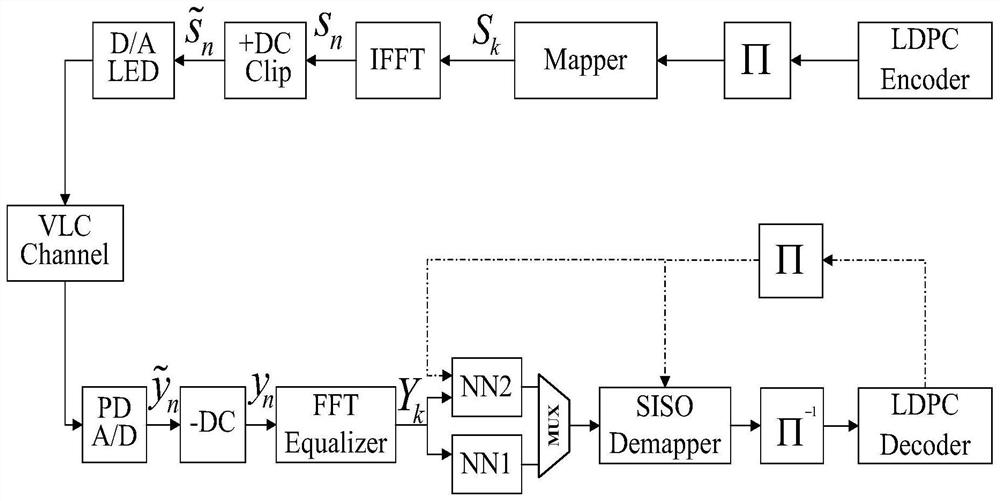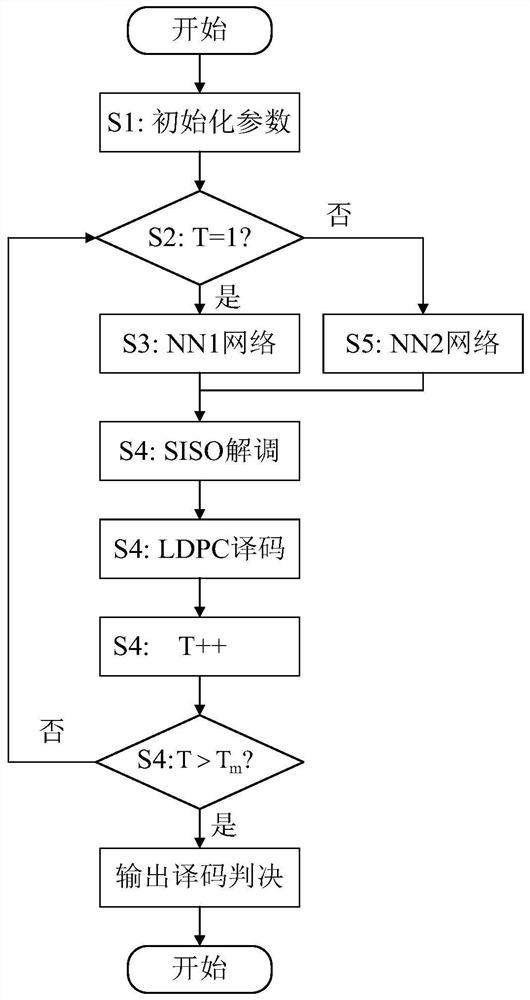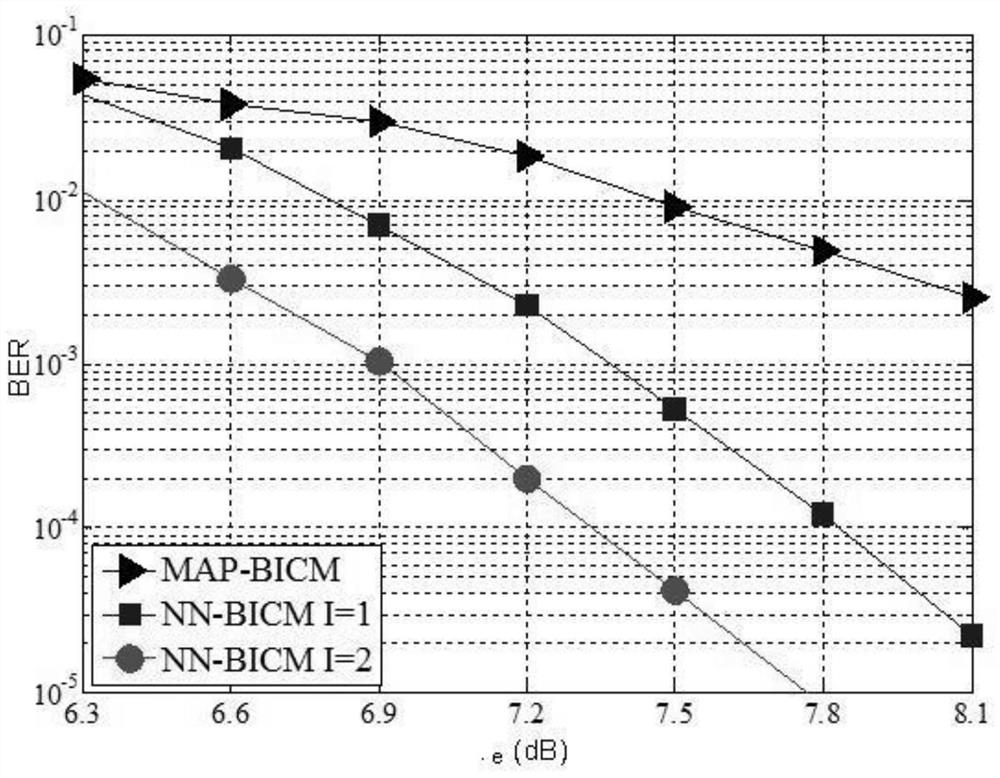A neural network-assisted iterative reception method for high-speed visible light communication
A visible light communication, neural network technology, applied in the transmitter/receiver shaping network, baseband system components, multi-carrier systems, etc., can solve the problem of clipping distortion not considered, performance gap, BICM receiver distortion And other issues
- Summary
- Abstract
- Description
- Claims
- Application Information
AI Technical Summary
Problems solved by technology
Method used
Image
Examples
Embodiment
[0031] like figure 1 Shown is to verify the performance results of the NN-BICM receiver. It is necessary to build a DCO-OFDM system simulation platform affected by bilateral clipping. The main physical layer parameters are shown in Table 1. The encoding scheme is determined to be the LDPC code of the IEEE 802.11 protocol; the encoding code length is selected according to the number of subcarriers, specifically, the encoding code length corresponding to 64 subcarriers is equal to 1296, and the encoding code length corresponding to 1024 subcarriers is equal to 1944; decoding The algorithm adopts Belief Propagation (BP) algorithm, and the maximum number of decoding iterations is set to 50.
[0032] like figure 2 As shown, a neural network-assisted iterative receiving method suitable for high-speed visible light communication is carried out according to the following steps:
[0033] In the S1 step in the embodiment, it should be noted that the modulation order M can be selected...
PUM
 Login to View More
Login to View More Abstract
Description
Claims
Application Information
 Login to View More
Login to View More - R&D
- Intellectual Property
- Life Sciences
- Materials
- Tech Scout
- Unparalleled Data Quality
- Higher Quality Content
- 60% Fewer Hallucinations
Browse by: Latest US Patents, China's latest patents, Technical Efficacy Thesaurus, Application Domain, Technology Topic, Popular Technical Reports.
© 2025 PatSnap. All rights reserved.Legal|Privacy policy|Modern Slavery Act Transparency Statement|Sitemap|About US| Contact US: help@patsnap.com



